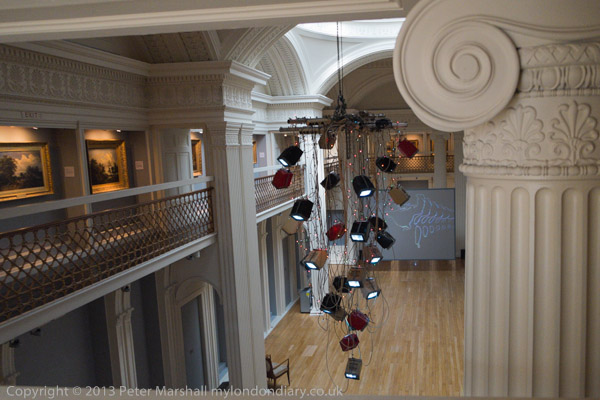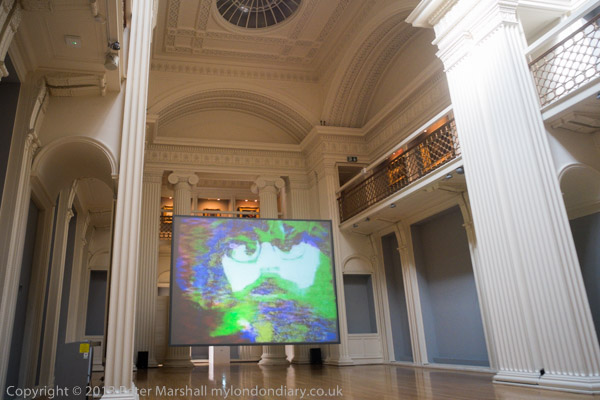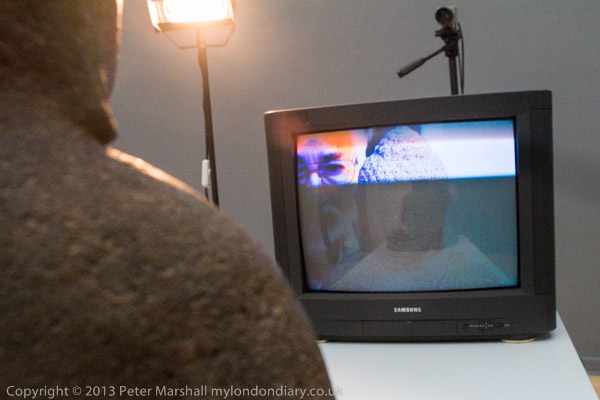
Video Chandelier No 1, 1989 and Global Groove video in the Talbot Rice Gallery
I’m generally not a great fan of video art, which seems to largely be a medium for inflicting terminal boredom on the viewer, usually saying very little at great length, sometimes taking 15 minutes to say what could have been summed up more elegantly in a single still image or perhaps a diptych or short series. But of course there are exceptions.
The Edinburgh Festival and its huge fringe isn’t a great place for the visual arts, and certainly not for photography shows. There is the Man Ray show already seen in London, and World Press Photo 2013, which doesn’t seem to be scheduled for London (though one year never seems greatly different from the last.) And the venerable International Exhibition of Photography organised by the Edinburgh Photographic Society, now in its 151st year – and I can’t help thinking the first 50 or so would still be of much greater interest.

Ginsberg (I think) in Global Groove, 1973 showing in the Talbot Rice Gallery
But one show that is certainly worth a at least a short detour and continues until Oct 19, 2013 is Transmitted Live: Nam June Paik Resounds, which celebrates the 50th anniversary of Paik’s first solo exhibition, Exposition of Music –Electronic Television at Wuppertal in 1963. He was really the guy who invented video and electronic art, and the 26 minutes of his Global Grove from 1973 demonstrates the effect his work has had since then (you can watch the first three minutes on YouTube) and still I think stretches it in ways that others have not – and he was thinking in terms of the ‘electronic super highway‘ back in the pre-internet days of the 1970s. Among his collaborators were Stockhausen, Cage and Ginsberg.

I take a close look at TV Buddha, 1974 in the Talbot Rice Gallery
The Edinburgh show doesn’t have some of the larger works you can see on a BBC web page about his Smthsonian show, but is a finely curated show which celebrated the 50th anniversary of his first solo show at Wuppertal in 1963. His official web page, which seems to have been left unchanged after listing the tributes to his death in 2006, is also worth a visit.
The Edinburgh show will also have great appeal for connoisseurs of outdated TV and video equipment and included a largish studio area of such junk as well as that in the actual works. If we sometimes feel that the archival preservation of photographic works is a challenge, the problems surrounding his work are massive.